What It Ultimately Takes to Bring Down a Confederate Monument
An interview with anti-racist activist Maya Little, who explains why she risked legal consequences for historical justice.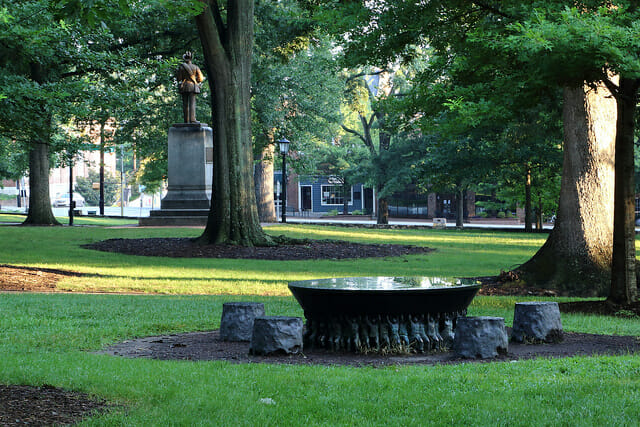 Silent Sam, pictured in the distance, prior to its removal from the University of North Carolina campus. (Don McCullough / Flickr)
Silent Sam, pictured in the distance, prior to its removal from the University of North Carolina campus. (Don McCullough / Flickr)
Last week, following a day of testimony, a North Carolina judge found UNC-Chapel Hill graduate student and anti-racist activist Maya Little guilty of a misdemeanor charge of defacing a public monument—the Confederate statue known as Silent Sam. The court stopped short of any further punishment, opting instead to waive all associated court fees and restitution. Little had been facing up to 60 days in jail, an absurd and unjust sentencing possibility for multiple reasons, the most salient being the disproportionate ratio of the punishment when stacked up against what North Carolina labels a crime. On October 25 and 26, Little will head into two days of hearings presided over by UNC-Chapel Hill’s Honor Court, which in June charged her with violating the university’s honor code. Once again, Little will have to endure a trial for an act that others before have undertaken without punishment.
On April 30, Little was arrested by UNC police after she poured a mixture of red paint and her own blood on Silent Sam. She is not, by a longshot, the first student to douse the monument in paint; accounts of Silent Sam being painted to celebrate basketball victories and sports rivalries date back to the 1950s. Yet there’s not a single record of arrests made or other punitive measures having been taken in those examples. Little’s case seems to have been singled out for punishment specifically because of the substantiveness of her actions. The message UNC-Chapel Hill appears to be sending is that frivolous vandalisms in the name of sports victories are okay, while substantive statements about racism and UNC complicity are not.
Silent Sam, erected in 1913, was one of many tributes to the Confederacy put up by the United Daughters of the Confederacy, the group that has done more than any other to install Confederate monuments and keep them standing. At the dedication ceremony, industrialist Julian Carr boasted that he had once “horse-whipped a negro wench until her skirts hung in shreds” near the statue site for not showing proper deference to a white woman, and gave a shout-out to the Ku Klux Klan for terrorizing blacks during Reconstruction, thus “sav[ing] the Anglo Saxon race in the South.” For 105 years after that speech, Silent Sam stood at the main entrance to the UNC-Chapel Hill campus, sending out a message about the university’s refusal to take a stand against racism—a message telegraphed to the world, including the school’s black students.
For more than 50 years, students have been protesting the statue’s glorification of a treasonous country that fought to ensure black enslavement in perpetuity. In 1965, the UNC campus newspaper published a student letter that noted “[t]he primary purpose of [Silent Sam] was to associate a fictitious ‘honor’ with the darkest blot on American history—the fight of southern racists to keep the Negro peoples in a position of debased subservience” and suggested the administration “take up the case of removing from the campus that shameful commemoration of a disgraceful episode.” Days after the 1968 assassination of Martin Luther King Jr., black students used defacement to protest Silent Sam’s racist presence, and they rallied at the statue after the 1970 murder of a young black man named James Cates by a white motorcycle gang. In the years since the 2015 racist massacre of nine black parishioners in a Charleston church, anti-racist activists have jumped through every legal hoop to bring the visible emblem of white terror down. Repeatedly, neo-Confederates and various racist groups have come to campus to rally in defense of Silent Sam, an open acknowledgement of the statue as a symbol of white supremacy and power. Again and again, their presence has proved that Silent Sam is a threat to public safety, particularly against students of color.
Despite all that, UNC’s administration never made a good-faith move to remove the statue. Instead, the university targeted anti-racist activists on campus in various troubling ways. Last year, the News & Observer noted that “campus police officials assigned a plainclothes officer to spy on students engaged in a peaceful vigil calling for removal of the Silent Sam statue. The officer didn’t merely watch the students from a distance. He infiltrated the group, lied about his political interests and identity, and cultivated students’ trust.” In July of this year, leaked emails revealed that a Board of Trustees member had labeled student activists “criminals” and “entitled wimps” and suggested they should be arrested. If inactivity defined the response of UNC officials, North Carolina’s Republican lawmakers took the opposite route. In 2015, as Confederate symbols were being challenged after the Charleston massacre—and weeks after the name of a Confederate soldier and KKK member was wiped from a UNC-Chapel Hill dorm—the GOP-led state legislature quickly passed a heritage law designed to keep Confederate monuments from being removed. Since then, as outcry against Silent Sam gained steam, they have twice reinforced the legislation.
With frustrations boiling over and legal options seemingly exhausted, anti-racist activists took down Silent Sam on August 20. It took only about an hour for the school’s Chancellor, Carol Folt, to decry their actions as “unlawful and dangerous.” Approximately 12 hours later, UNC President Margaret Spellings and Board of Governors Chair Harry Smith put out a joint statement calling the event “unacceptable, dangerous, and incomprehensible” and ominously warning that “mob rule and the intentional destruction of public property will not be tolerated.” On Twitter, UNC Board of Governors member Thom Goolsby rushed to brand the protesters as “criminals,” and issued the vague threat that those who “destroyed state property” would be “held accountable.” North Carolina’s GOP House Speaker Tim Moore lamented “the destruction of property” along with “mob rule and acts of violence”; former Governor Pat McCrory compared the protesters to “Nazis of the 1930s”; and GOP state Representative Larry Pittman breathlessly argued that the statue’s removal by “mob rule… could lead to an actual civil war.”
The outpouring of concern from UNC officials and conservative lawmakers about violent threats to student safety related to Silent Sam was most notable for its suddenness, considering that both parties had done nothing to address the potential for violence Silent Sam’s presence had created dating back decades. Nearly two months to the day after Silent Sam’s toppling, a North Carolina judge in another monument-related case took UNC to task for the danger its inactivity had posed.
“I ask the leadership of the university if your goal is to teach a diverse community of students, what are you doing to assure that all students feel emotionally and physically safe?” queried Orange County District Court Judge Beverly Scarlett. “What is the difference in the Silent Sam statue and a statue of Adolf Hitler? Is human suffering not a common denominator?”
It’s a valid question. UNC had chosen to ignore the violence and terror against black folks that Silent Sam was erected to represent; vicious racists have been drawn to the monument, which they recognized as a symbol of white power and supremacy. That violence was the issue Little’s protest had specifically aimed to address. And for all of those reasons, her protest should be considered a valid and courageous response to an unjust law.
I spoke with Little just ahead of her court hearing about Silent Sam’s history, the legacy of racism surrounding the statue, UNC’s inaction on the issue and the hidden history of resistance to white supremacy.
Kali Holloway: Can you talk about when you first became aware of Silent Sam and what he stood for?
Maya Little: It was before I matriculated, and I was walking on campus and I saw Silent Sam, which is the most prominent monument on campus. It was one of the first Confederate monuments I had ever seen, and I was disgusted. I couldn’t imagine that this smirking, armed Confederate soldier [was] not only on campus but, as I later found out, facing a historically black neighborhood. My first impulse was [to ask] what have people been doing about this? What I’ve come to find out is that there has been so much movement around Silent Sam for the last 50 years and that’s still hidden. There’s nothing around Silent Sam that commemorates students who marched there in 1973, after James Cates’ killers were acquitted. Nothing of the students who marched there after Rodney King was beaten in Los Angeles. Nothing of the movement to get rid of the statue over the last 50 years. One thing about discovering the statue was also discovering the history of resistance around it.
KH: Did you immediately decide to engage in activism to take the monument down?
ML: No. I didn’t know how to respond aside from doing research because, again, we’re disconnected from these legacies of resistance. The first time you see the statue, you feel isolated. You feel like you are looking up at this statue of a slaveholder and no one cares—no one’s doing anything about it. What helped me get involved on the first day of protests last year was seeing so many people from the community, and students and faculty, marching on that statue and demanding it be taken down—and so much community support against white supremacy. The University made clear that day what side they were on when they had riot police guarding the statue and they put up barricades around it. They refused, despite the so many pleas to remove the statue, to do anything about it.
KH: Can you talk about some of the COINTELPRO stuff that’s happened with UNC?
ML: There’s a legacy of surveillance, police harassment and abuse of activists at UNC, especially black student activists. Black Student Movement was a group that was founded in the 1960s. It was surveilled by the COINTELPRO program, and the university and campus police were complicit in and aided that surveillance. They wiretapped Black Student Movement’s offices. That only was found out about in the 1980s.
Fast-forward and UNC is still spying on students, still harassing and abusing students, still using tactics that have been declared illegal, unlawful, intimidating, racist. UNC is also engaging in very openly, physically silencing students. Over the last few protests on McCorkle Place [where the Silent Sam pedestal remains], I have seen and personally been pepper sprayed by an unhinged Greensboro police officer. I have been hit and punched in the ribs and on my arms, with bicycles by UNC police, by actual police.
Now that the statue is gone, the university is trying to silence everyone who stood against what the statue stood for. What I’m afraid of is, seeing that it’s already extending into physical harm, where else can it get to? That’s what I fear. When I see police officers pointblank pepper spray a student in the face for allegedly giving them the finger, I think, what if that was a gun in that police officer’s hand?
KH: I want to go back just a little bit to talk about how you had the idea to mix your blood with paint for the protest action.
ML: What I see, and what so many other black students and faculty see when they see Silent Sam, and those buildings named after slave owners—people who murdered black politicians fighting for equality—is black blood. We see an attempt to sanitize and whitewash that.
Black blood which he’s already covered in. Black blood which he was built on. Black blood, which the people who dedicated him caused to flow for their ideals, which were Jim Crow, racism, lynching, brutality against black people. As I correctly predicted, the University washed my blood off that statue immediately. For 105 years, the university didn’t act on a monument dedicated by a man who bragged about whipping a black woman, but it can act within seconds to take my blood off the statue to make sure that the statue remains whitewashed. That it remains in McCorkle Place rather than exposing the brutality Sam stands for, which [includes] violence towards black community members at UNC, the enforcement of a color line in Chapel Hill, the murder of James Cates, the continued exploitation of black athletes, and a majority black and brown workforce who are not paid a living wage.
KH: I know that you’ve received threats for your protests.
ML: Yeah, I’ve gotten a lot of death threats online from people who are local, who live in Chapel Hill and Carrboro. People who very openly attach their name and where they live. I think that’s because these are the people that support Silent Sam, and they know what Silent Sam stands for too. The fact that they’re threatening to lynch me, to hang me over the tree that Silent Sam stood under is no coincidence.
KH: This was not the first time that Silent Sam had been painted, but the motivation for why it was painted has previously been connected to sports. You were making a very different statement, and the difference in the way that the university and police reacted to that is astounding. Can you talk about that disparity?
ML: The statue’s been painted multiple times, and it’s been painted in graffiti to expose racism, and it’s also been painted for sport. In those cases when it’s been painted Duke blue or Carolina blue or NC State red, there’s been no punishment, and it’s not been treated seriously. That’s because painting Silent Sam to expose racism—to talk about the history of the Confederacy and the history of white supremacy on campus—is not allowed. It’s an act unbecoming of a UNC affiliate, apparently. But setting fires on streets after a championship game is apparently a UNC pastime, is acceptable and okay.
KH: What’s the thing you hope your protest has most driven home?
ML: The statue preys on black lives; it’s not here to memorialize this idea of boys who served in the Confederate army. Let’s talk about the history of North Carolina.
Written on the statue, it says, “Dedicated to the men who answered the call of duty.” The most sublime word is “duty.” Why do we have a monument on campus telling young people to drop their books and to go into war? Even beyond white supremacy, that is an unacceptable monument.
Let’s also talk about the men at UNC who were fighting for the Confederacy. These were not poor farm boys—there’s a whole history in North Carolina of people deserting and facing being hung by the Confederate army for refusing to fight. The men from UNC who were fighting were officers, and they had a vested interest in slaveholding. The people who erected [Silent Sam] were their descendants [and] they had the same vested interest in Jim Crow and preventing black people from voting and owning property and having any rights. That’s who Silent Sam memorialized.
This article was produced by Make It Right, a project of the Independent Media Institute.
Your support matters…Independent journalism is under threat and overshadowed by heavily funded mainstream media.
You can help level the playing field. Become a member.
Your tax-deductible contribution keeps us digging beneath the headlines to give you thought-provoking, investigative reporting and analysis that unearths what's really happening- without compromise.
Give today to support our courageous, independent journalists.
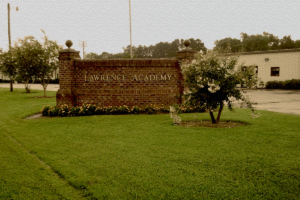
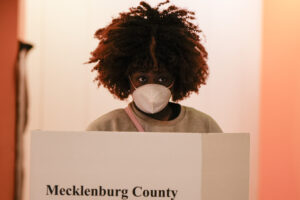
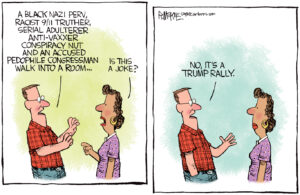
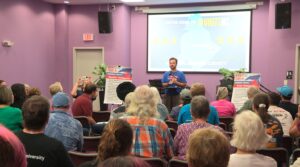

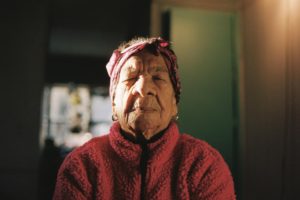


You need to be a supporter to comment.
There are currently no responses to this article.
Be the first to respond.